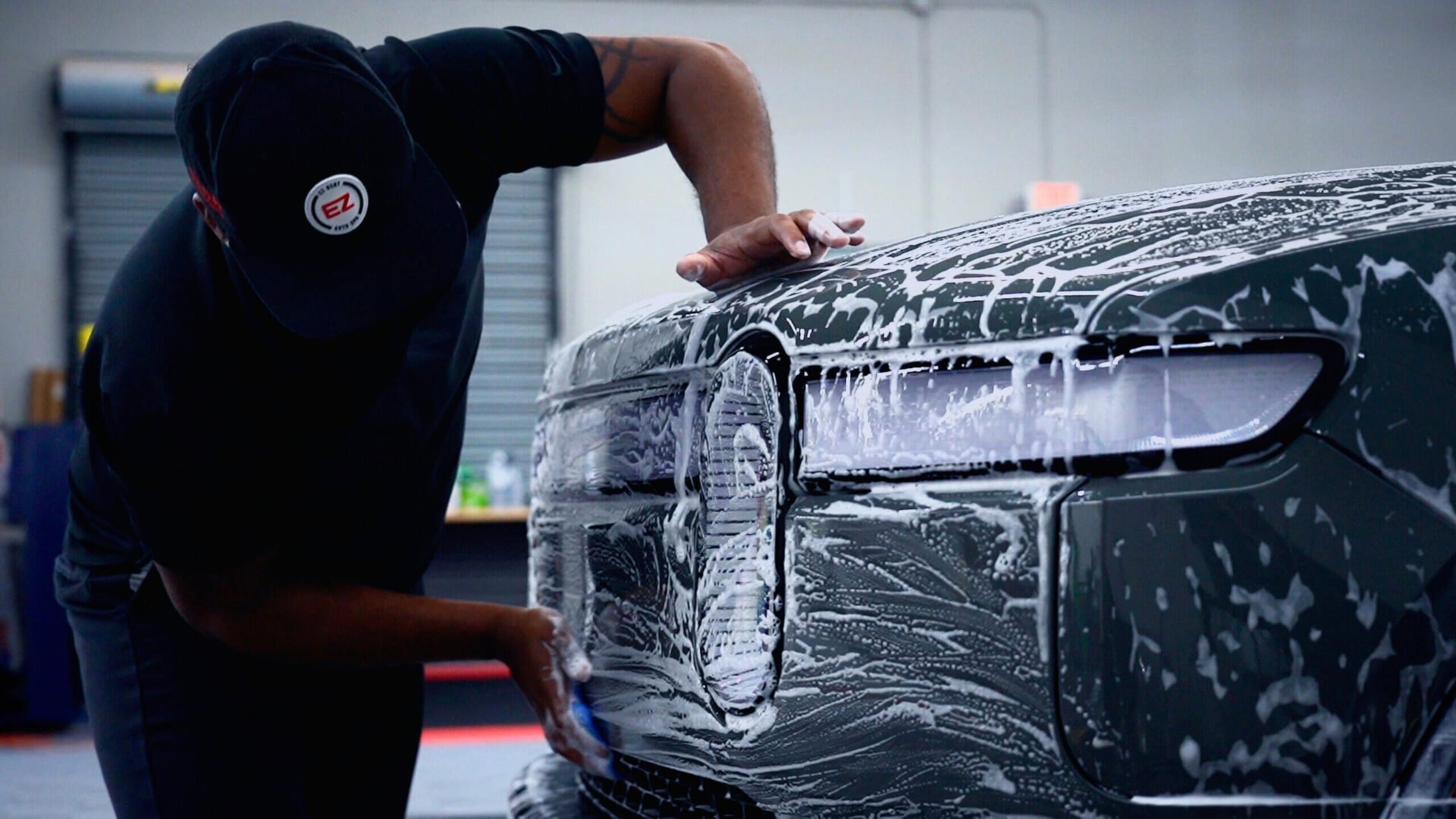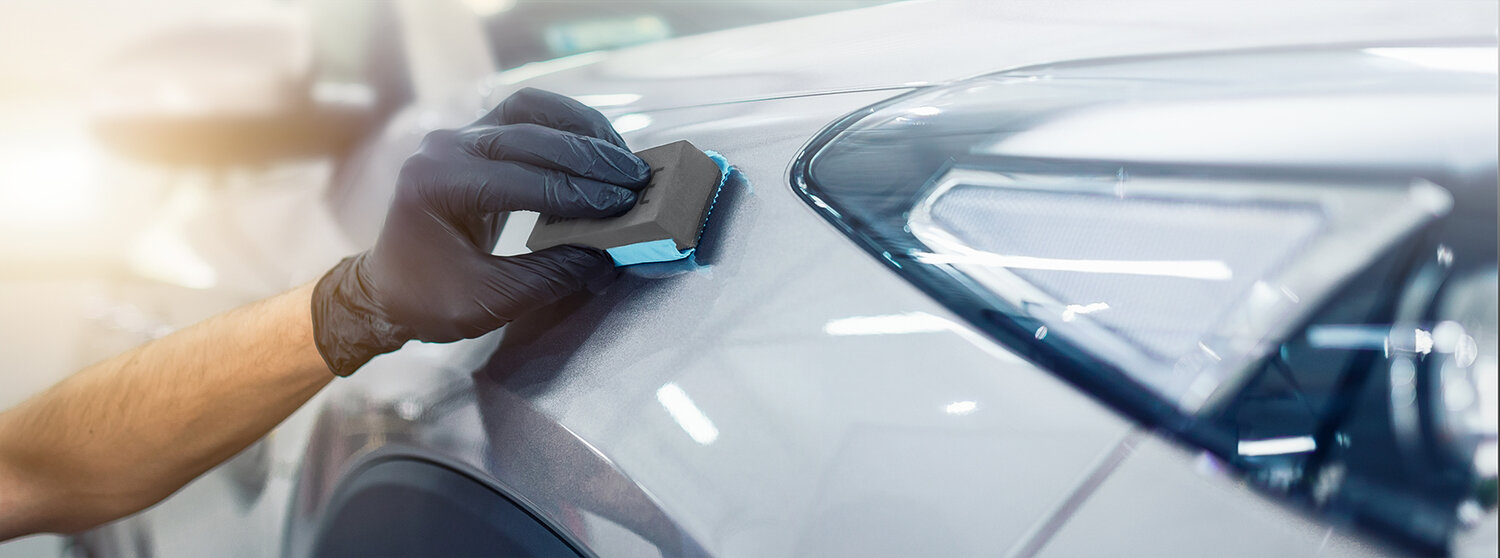The Function of Ceramic Coating in Enhancing Your Automobile's Resale Value
Wiki Article
The Relevance of Ceramic Coating: Safeguarding Your Vehicle's Outside With Accuracy
In an era where preserving the aesthetic and functional integrity of your car is vital, ceramic finishing arises as a pivotal option. This safety layer not only guards against ecological misfortunes but additionally elevates the aesthetic allure of your vehicle. With its distinct bonding homes, ceramic coating supplies a degree of protection that much goes beyond traditional waxing methods. Yet, just how exactly does it achieve such amazing results? As we explore the nuances of its application and compare it to other options, one can not wonder yet assist about the specifics that make this technology indispensable for contemporary cars and truck care.Advantages of Ceramic Coating
When it comes to protecting an auto's aesthetic appeal, ceramic finishing supplies significant advantages. By forming a semi-permanent bond with the lorry's paint, ceramic layers successfully stop oxidation and fading, guaranteeing that the car maintains a glossy, showroom-like surface for an extensive duration.Along with its safety high qualities, ceramic coating offers impressive hydrophobic buildings, creating water and other fluids to grain off effortlessly. This feature streamlines the cleansing procedure, as dirt and debris are much less likely to stick to the surface area, decreasing the regularity and initiative needed for upkeep. The covering's resistance to chemical spots from acidic pollutants like bird droppings and tree sap is an additional notable advantage, lessening potential paint damages.
Ceramic coatings also boost scrape resistance, giving a layer that can soak up small abrasions and swirl marks. This quality is specifically beneficial in keeping a pristine surface area, decreasing the likelihood of noticeable flaws and protecting the honesty of the vehicle's paintwork over time.

How Ceramic Covering Works
Understanding the auto mechanics behind ceramic finishing reveals its efficiency as a safety solution for cars. Ceramic coverings are basically fluid polymer applications that chemically bond with an automobile's factory paint, developing a safety layer. This layer acts as an obstacle versus environmental impurities such as dust, ultraviolet, and crud rays, which can degrade a cars and truck's outside in time. The key part in ceramic finish is silicon dioxide (SiO2), which stems from quartz crystals and is recognized for its extraordinary solidity and toughness.Application of ceramic covering involves a thorough process. At first, the lorry's surface area must be thoroughly cleaned up and decontaminated to guarantee ideal attachment. Once applied, the fluid polymer creates a semi-permanent bond with the paint, setting into a clear, resilient guard. This guard enhances the vehicle's gloss and hydrophobic homes, promoting less complicated cleaning by causing water and impurities to grain and slide off easily.
In addition, the covering's molecular structure provides resistance to minor scrapes and chemical spots. Unlike waxes or sealers that sit on top of the paint, ceramic coatings incorporate with the surface area, providing resilient defense. This combination is fundamental to its performance, ensuring the automobile's surface stays excellent for many years.
Contrasting Ceramic Coating to Alternatives
In the world of vehicle defense, ceramic covering stands as an awesome choice when compared to standard alternatives such as waxes and sealants. While waxes use a momentary lustrous coating, usually lasting just a few weeks to months, ceramic finishes offer a longer-lasting remedy, typically sustaining for many years. This durability is credited to the chemical bonding that happens when ceramic layers are applied, forming a solid layer that is immune to ecological hazards.
Contrastingly, sealers, although even more resilient than waxes, still fall brief of the durable security supplied by ceramic finishings. Sealers can usually last for approximately a year, providing a synthetic guard versus specific aspects. They do not have the remarkable hydrophobic residential properties and UV security that ceramic finishings supply.
Moreover, ceramic coatings use boosted scratch resistance, next which neither waxes neither sealants can efficiently match (ceramic coating). This is particularly useful in preserving an auto's immaculate look. In addition, ceramic finishes simplify maintenance initiatives by minimizing the adherence of dirt and crud, therefore helping with simpler cleaning. In summary, while typical waxes and sealers provide basic defense, ceramic layers offer a detailed, long-lasting service that considerably protects the lorry and improves's outside surface.
Application Process Explained
Using ceramic layer to an automobile needs a precise process to guarantee ideal outcomes and resilience. The preliminary action entails extensively cleaning the car's surface area to get rid of dust, oil, and previous waxes. This is vital for ensuring the coating adheres appropriately. A pH-neutral hair shampoo and a clay bar treatment are usually made use of to attain a pristine surface. Once cleaned, the car is dried out and brightened to get rid of any imperfections, as any type of existing scratches or swirls can end up being extra noticable after the coating is applied.Complying with surface area prep work, the application of the ceramic finishing starts. Utilizing an applicator pad, the ceramic covering is used in little sections to ensure even protection.
After application, the coating calls for a certain curing period, throughout which the automobile must be shielded from water and impurities. This treating process can vary relying on the product but generally varies from 24 to 2 days. Ultimately, this in-depth process is pivotal in achieving a durable and glossy coating.
Upkeep Tips for Long Life
To keep the longevity of a ceramic coating, adherence to a disciplined maintenance routine is necessary. Avoid automated cars and truck cleans, as their severe brushes can endanger the covering's stability.Post-wash, drying the automobile with a tidy microfiber towel stops water places that might break down the finish over time. In addition, apply a ceramic finishing booster every few months. These boosters enhance the hydrophobic properties and boost the finishing's safety capacities, guaranteeing it stays efficient against impurities.
Maintain in mind that car parking locations play a critical role in upkeep. ceramic coating. Whenever possible, park in shaded locations to lessen UV direct exposure, which can gradually deteriorate the layer. For lasting storage, consider making use of an auto cover for included defense versus environmental components
Conclusion
In final thought, ceramic layer offers as an important protective layer for vehicle exteriors, offering lasting protection against environmental variables such as grime, uv, and dirt rays. By developing a semi-permanent bond with the paint, it improves visual charm while maintaining the automobile's worth. Its hydrophobic properties assist in much easier maintenance, distinguishing it from different protective approaches. Comprehending the application process and adhering to upkeep recommendations are necessary for making best use of the long life and efficiency of ceramic finishing.When it comes to preserving an auto's aesthetic pop over to this web-site charm, ceramic coating offers substantial benefits. By creating a semi-permanent bond with the car's paint, ceramic coverings efficiently avoid oxidation and fading, making certain that the auto preserves a glossy, showroom-like surface for an extended duration. Ceramic layers are click for source basically fluid polymer applications that chemically bond with a vehicle's manufacturing facility paint, developing a protective layer. In recap, while typical waxes and sealants provide fundamental protection, ceramic coverings provide a thorough, lasting remedy that substantially improves and preserves the car's outside surface.

Report this wiki page